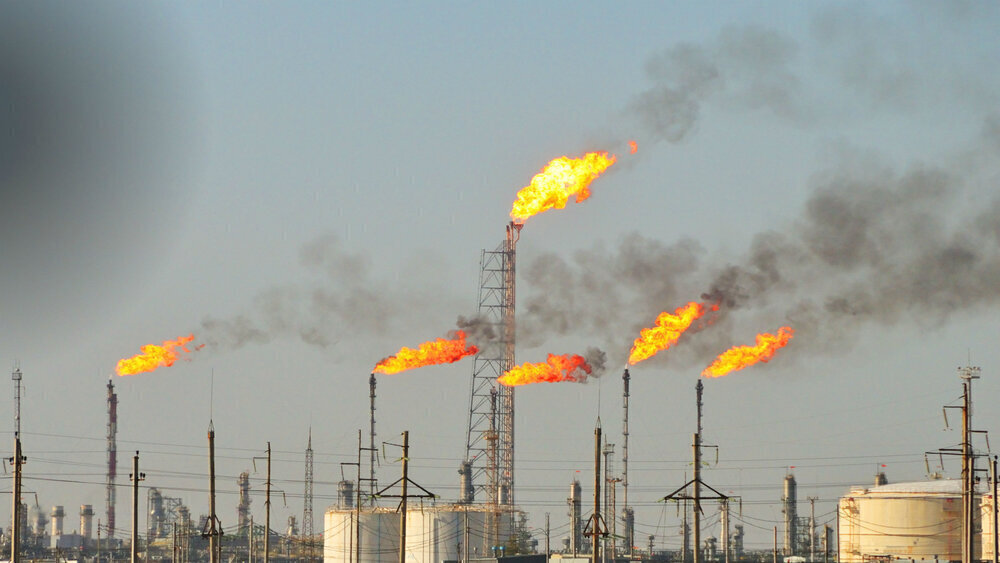South Pars to reduce gas flaring by 1.2 bcm annually

TEHRAN - Managing Director of the South Pars Gas Complex (SPGC) Ahmad Bahoush says a project is underway at the complex which upon its completion, the volume of gases being burnt by gas stacks will be reduced by 1.2 thousand million cubic meters annually.
Bahoush added that the project will be completed in August 2024, noting the complex has been able to achieve considerable success in view of halting gas flares last year.
By completion of the project, the daily volume of gases being burnt will fall to 5.3 million cubic meters per day from 8.7 million cubic meters per day two years ago, he said, noting “right now, gas stacks are burning 7.4 million cubic meters of associated gases per day.”
The official said elsewhere in his remarks that the complex has started a 3-phase process for buying, implementation and holding auctions, expressing hope that the process to bear fruit in the shadow of Jihadi efforts are made at South Pars Gas Complex.
When the remaining gas flares sale project is completed, the volume of the burning associated gases of the complex will shrink by another one billion cubic meters annually, he said.
“The rate of the progress of halting gas flares projects implementation are reported and monitored at weekly meetings of the managing director of South Pars Gas Complex and NIGC’s director for coordination and supervision in which the bottlenecks and challenges are reviewed regularly.” He noted.
According to him, nine gas processing plants were able to achieve their 1-year targets fully, overcoming challenges they faced during the last Iranian calendar year of 1402, which ended 19 March 2024.
Earlier this month, Head of the Department of Environment (DOE) Ali Salajegheh announced that the government has spent $5.5 billion to reduce gas flaring to improve air quality.
Speaking to Shana, DOE’s head said that since the 13th administration took office in August 2021, burning associated gases from 55 flares have come to a halt amid spending 5.5 billion dollars for upgrading the quality of fuels and improving air quality.
The government is determined to improve the Petro-refineries and gas processing plants efficiency so that air pollution will subside, he said noting over the last year the amount of burnt fuel oil reached the lowest when compared with preceding years.
According to the head of the Department of Environment, the 13th administration has taken serious steps to improve the quality of fuel at 10 oil refineries while those refineries have designed some major projects to reduce using fuel oil and desulfurize their oil products as well.
Also, the managing director of the National Petrochemical Company (NPC) Morteza Shahmirzaie told Shana this month that the process of gathering associated gases will accelerate this year so that the majority of petrochemical complexes' gas flares will be turned off at the end of the current Iranian calendar year on March 20, 2025.
Visiting Assaluyeh, the host of gas processing plants south of Iran, NPC’s managing director added that NPC plans to pursue the gathering associated gases program more seriously this year.
“Gas flares play the role of safety valves so that when there is an emergency situation, they start burning to prevent the occurrence of an incident, and when there is a stable situation their burning is contained,” NPC’s managing director said.
He went on to say that in a year which has been named the Year of Production Leap Through People’s Participation, petrochemical projects will bear fruit one after another.
EF/
Leave a Comment